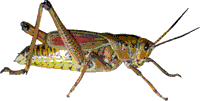Entomology Collections, General

Entomology Papers from Other Sources
Document Type
Article
Date of this Version
1999
Abstract
The flea beetle, Phyllotreta cruciferae (Goeze), is a pest of crucifer crops throughout most of North America (Lamb, 1989). Adult beetle feeding on crucifer vegetables causes small pits in the epidermis, which affects the marketability (Vaughn & Hoy, 1993). Larger population of beetles can kill or stunt seedlings. In the northern Great Plains of the United States and Canada, this species is the most serious pest of spring-planted oilseed rape, Brassica napus and B. rapa (Lamb, 1989; Weiss et al., 1991). Overwintering adults feed on the cotyledons and stems, resulting in seedling mortality and causing the crop to mature unevenly when the population is high (Burgess, 1977; Lamb, 1989).


Comments
Published in Physiological Entomology (1999) 24, 98–99.